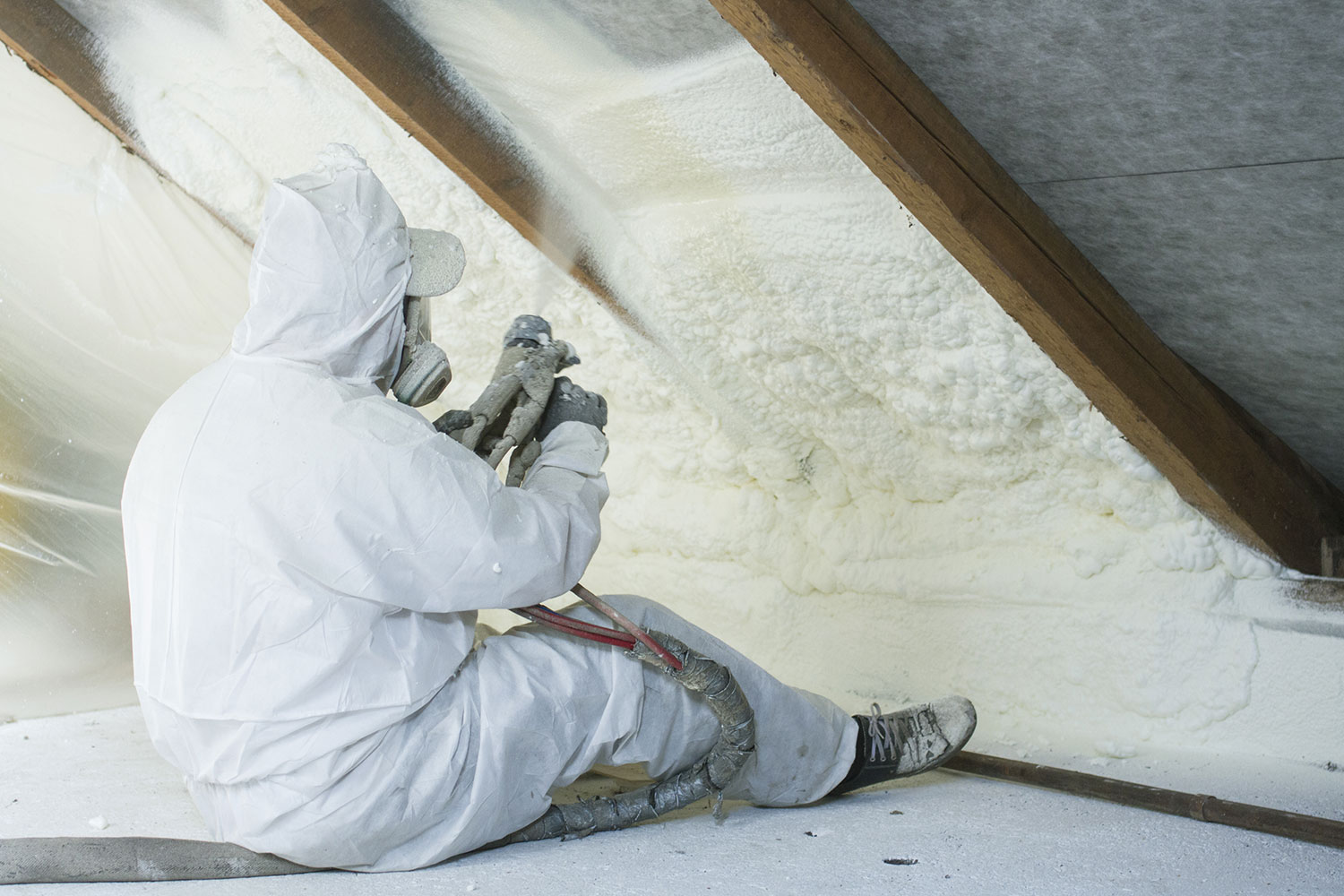Introduction: A Popular Upgrade That Can Go Wrong
Spray foam insulation is a powerful tool in the world of building science—especially in Florida, where hot, humid conditions make energy efficiency and air control critical. Many homeowners and builders are choosing to convert vented attics into unvented (conditioned) spaces using spray foam.
But here’s the catch: spray foam doesn’t work on its own. If not implemented with the right steps, this upgrade can lead to serious indoor air quality issues, moisture problems, and comfort complaints.
At Coastal Air Assessments, we help clients in West Palm Beach and throughout South Florida understand how to implement spray foam correctly and safely, with building science principles and IAQ performance in mind.
Why Convert a Vented Attic to Unvented?
Traditionally, attics in Florida homes were vented to remove heat and moisture buildup. But vented attics have some serious drawbacks:
- HVAC ducts and air handlers get exposed to 130°F+ attic temps
- Insulation on the attic floor allows thermal bridging and air leakage
- Humid outdoor air can enter through vents and condense inside the attic
By applying spray foam insulation to the roof deck, the attic becomes part of the conditioned space, improving:
- Energy efficiency
- HVAC performance
- Thermal comfort
- Building durability
But this only works when the job is done with building science integrity.
Step-by-Step: How to Properly Convert a Vented Attic to an Unvented Spray Foam System
1. Stop Venting the Attic
Before any spray foam is applied:
- All roof vents (ridge, soffit, gable, turtle) must be sealed.
- This creates a continuous air barrier at the roof deck.
- Leaving vents open after foam application causes moisture migration and condensation.
Failing to seal vents is the #1 reason why attic encapsulation fails.
2. Apply Closed-Cell or Open-Cell Spray Foam to the Roof Deck
Spray foam should be applied:
- Directly to the underside of the roof sheathing
- Over all rafters and framing for a continuous air and thermal barrier
- At recommended R-values (typically R-20 to R-30 in Florida)
Closed-cell foam provides moisture control and structural strength
Open-cell foam is more affordable and flexible but may require vapor control measures
Hire only licensed professionals familiar with building code and spray foam chemistry.
3. Seal All Penetrations Between Attic and Living Space
To avoid attic-to-living space air leakage:
- Seal around attic hatches, can lights, duct boots, and framing gaps
- Foam or mastic around all HVAC penetrations
- Confirm no pathways remain for unfiltered air to enter the living space
Our attic air leakage inspections in Palm Beach County can verify sealing success.
4. Ensure Mechanical Ventilation and HVAC Compatibility
When sealing the attic, you’re also sealing off natural ventilation—so mechanical ventilation becomes critical.
You MUST:
- Introduce supply air or a return vent into the attic space
- Ensure air mixing and humidity control inside the now-sealed attic
- Consider adding ERVs or dehumidifiers if HVAC cannot manage new load
Failure to ventilate a sealed attic often leads to high humidity, microbial growth, and IAQ complaints.
5. Address Combustion Safety and Material Off-Gassing
Spray foam, especially in enclosed areas:
- Needs cure time before occupancy (24–72 hours minimum)
- May off-gas VOCs and chemicals during and after application
- Should be fire-rated or covered with an ignition barrier
Commercial buildings must meet code-mandated thermal and ignition barrier requirements.
IAQ-sensitive clients should conduct post-application air testing before reoccupying.
6. Monitor IAQ and Building Performance After Installation
After spray foam is installed:
- Use humidity monitors to watch for moisture buildup
- Perform air quality sampling to detect chemical residues or elevated CO₂
- Inspect for signs of condensation, odor, or pressure imbalance
Our IAQ and building science post-insulation inspections in South Florida ensure your attic upgrade is working, not hurting.
Common Mistakes That Undermine Spray Foam Projects
- Leaving attic vents open after foam application
- Not including HVAC air supply or return in the attic
- Applying too little foam (below code-required R-values)
- Failing to seal top plates and chases before application
- Ignoring moisture drive from the living space into the attic
- Not testing IAQ post-installation in sensitive buildings
Why Choose Coastal Air Assessments for Your Attic Conversion Project?
- Experts in building science and ventilation planning
- IAQ professionals trained in spray foam-related risk mitigation
- Use of thermal imaging, moisture meters, particle counters, and VOC testing
- Trusted by homeowners, builders, and commercial clients across South Florida
Final Thoughts: Don’t Just Spray It—Seal, Ventilate, and Verify It
Spray foam insulation is a powerful upgrade, but without proper planning, it can introduce more problems than it solves. The attic may be out of sight, but when sealed improperly, it affects every breath you take inside your home or business.
At Coastal Air Assessments, we’re here to ensure your attic conversion follows the right building science steps to improve comfort, air quality, and energy performance—not compromise them.
Book a Spray Foam Readiness or Post-Install IAQ Inspection
- Call 562-400-0929
- Visit www.coastalairassessments.com
- Serving West Palm Beach, Stuart, Jupiter, Wellington, and surrounding Florida communities

